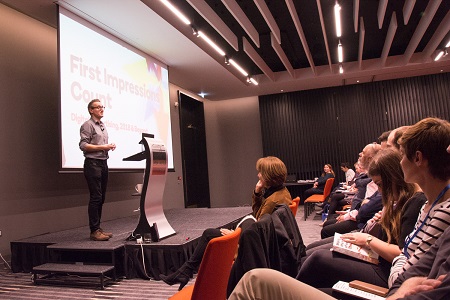Thursday 9th November saw SearchStar's first full-day conference being held at the Apex Hotel in Bath. With speakers from Google, Facebook, PZ Cussons, covering topics that ranged from Attribution to Behavioural Economics, it was an information-packed day. If you didn't come along - or if you just need a recap of what we covered - here's our summary of the day.
A better way to build brands
Jennifer Prior, Agency Lead, Google
Read Jennifer's presentation here...
Jenn kicked off the day with a look at the challenges posed by a fragmenting media landscape (notably, the continuing decline of mass TV viewing). These challenges were contrasted with the opportunity presented to advertisers by the trend towards consumers “living online”: any screen, any time.
At the heart of this opportunity is machine learning – artificial intelligence – which will allow advertisers to make use of the millions of signals created by web users every day. Manual optimisation simply can’t deal with the mass of data now being created, and certainly can’t compete with Google’s capacity to process 70 million signals in the blink of an eye.
Importantly, Jenn argued that the use of machine learning will reduce time spent on bare implementation of marketing campaigns. Advertisers and agencies will be able to focus on being more creative and thinking more strategically, central components of successful branding campaigns.
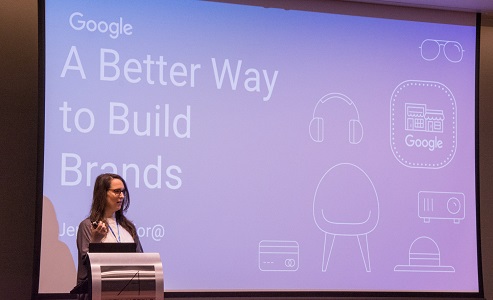
Discover growth: Brand and performance advertising on mobile
David Wilson, Head of FMCG Strategy EMEA, Facebook
Read David's presentation here...
David positioned Facebook (and Instagram) as the world’s discovery engine. The introduction of the Facebook newsfeed has transformed the platform from a “pull” medium to a “push” one, allowing brands to find users and grow business. However, with 5 billion gigabytes of content data being created every 10 minutes, and the pace of content creation outstripping our ability to consume it, David stressed that just creating more online content wasn’t a successful brand-building strategy.
Quality is paramount and, to cut through on Facebook, ads have to be both relevant and remarkable. Moreover, with an average of just 2.5 seconds to capture a user’s attention, messages need to be delivered quickly and concisely. This is allied to a trend towards more visual and interactive formats, from photos to videos to virtual reality.
Finally, David warned against the “tyranny of the click” and the value of the 999 (people out of 1,000 who don’t convert having seen an ad). With Facebook able to measure impression-based ad recall and brand uplift, while getting better at capturing offline conversions, success of a campaign needn’t be predicated on the clicks and conversions that an ad does (or doesn’t) get.
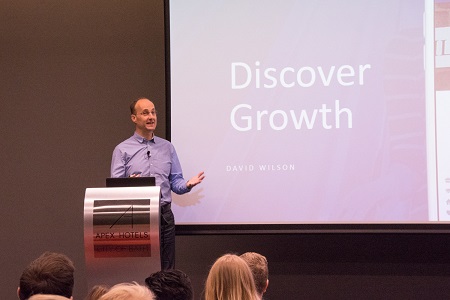
How to build brands via search
Paul Morris, Global Digital Director, PZ Cussons
Read Paul's presentation here...
Introducing an infographic winningly titled the “Digital Onion of Awesomeness”, Paul wanted to prove that, in order to build a brand via search, we have to question and expand our conception of what we mean by “search”. He showed that the medium can stretch far beyond the Google homepage, and advertisers need to consider how they are optimising their presence on Amazon, YouTube, in App Stores and for the brave new worlds of voice search and augmented/virtual reality.
Paul then examined the importance of trust in brand building and how this could be fostered with his G.O.O.D framework (Gravitas, Openness, Outreach, Distribution). He stressed the need for credibility, consistency and intimacy in brand communications and how these principles could be used to great effect in engaging with key online influencers – the people who really get listened to when it comes to promoting a brand.
Continuing a now familiar theme, it seemed that digital marketing campaigns might rely on technology to be implemented but the success of them relied on much more human aspects of communication.
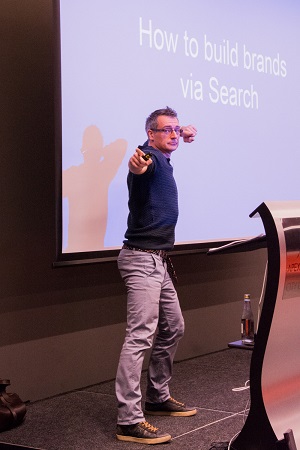
We’re all brand scientists now
Lisa Killbourn, Brand and Strategy Consultant, Independent Eye
Lisa’s presentation focussed on the need to de-risk investment in branding activity by understanding, in as scientific a way as possible, what makes a brand campaign successful. How do customers make decisions and does this affect branding strategy?
Based on significant psychological research, it seems that customer decision making in all areas is far more influenced by unconscious, emotional and intuitive responses (Fast Thinking) than it is by conscious, rational, and deliberate consideration (Slow Thinking). We, as humans, use intuitive shortcuts to enable us to process large amounts of information, and by understanding these shortcuts it’s possible to affect a change in behaviour.
Lisa showed that by tapping into these shortcuts, branding campaigns that appeal emotionally to Fast Thinking are vastly more successful than those seemingly rational campaigns that simply appeal to Slow Thinking. Importantly, this means that consumers will buy into why you do something as a business more readily than because of what you do.
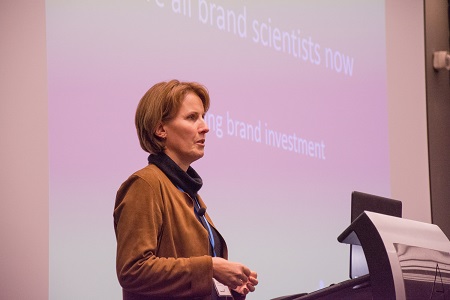
Channelling programmatic
Rob Langan, Programmatic Account Manager, SearchStar
Read Rob's presentation here...
Rob was at pains to point out that he wasn’t going to just talk about banners. Rather, he walked us through the best ways to channel programmatic advertising, while stressing the fact that programmatic, itself, is not a channel; it is a mechanic for buying media, irrespective of channel.
Rob reminded us of the need to match different media with the different stages of the consumer journey (from awareness, through consideration to conversion) and, importantly, to align relevant goals and KPIs with each stage. A whistlestop tour through some of the latest developments from Amazon, Facebook Messenger and Addressable TV Servicess (such as Sky AdSmart) proved the point that programmatic is about automated buying technology, not the media that’s bought.
Chiming with Jenn’s point in the previous presentation, while technology is at the heart of programmatic, Rob concluded that great creative and strategic thinking is what makes it really work.
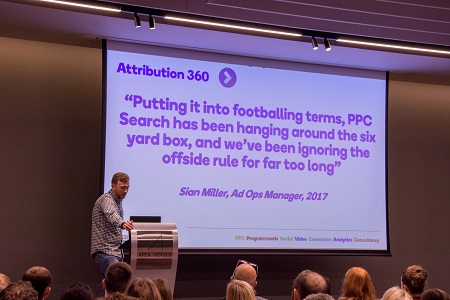
Attribution: Is my digital activity performing?
Jon Boon, Senior Analytics Consultant, SearchStar
Read Jon's presentation here...
Jon had two aims for his presentation: to convince us to look beyond the traditional conception of conversion rate and to make us drop the use of last click attribution. Ordinarily, conversion rate is based on a session-based view of website activity (conversions/sessions). Jon argued that this simple metric overlooked the reality of how people use the internet nowadays - any screen, any time – and that to truly understand how a website is performing, we need to make measurement about the user.
By considering a user-based conversion rate (conversions/users), we get a much clearer picture of site performance, uncomplicated by the many touchpoints that may precede a conversion. However, Jon admitted that, when it comes to attributing these conversions to a particular channel the picture is far from clear, owing to a historical reliance on last-click models and a tendency for each media platform to favour itself when it comes to claiming credit.
Fortunately, the advent of free access to Google Attribution in 2018 should help solve this issue, with machine learning providing accurate, dynamic attribution modelling for all, working across device and in conjunction with offline media. Could this have been the last talk on attribution you needed to attend?
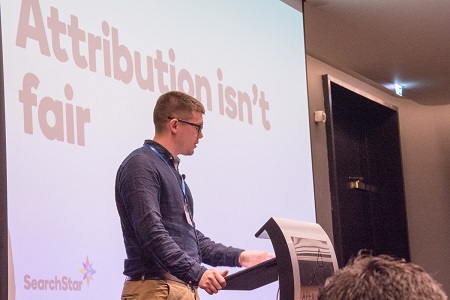
The 4 A’s of Paid Search
Rob Wilde, Client Success Manager, SearchStar
Read Rob's presentation here...
Rob’s talk gave an admirably clear exposition of some of the key building blocks of a successful paid search campaign. Proper consideration of Audience (the first A) allows for ads to be effectively customised to meet the needs of your customers. Generic keywords may reveal a level of intent (e.g. “holiday in France”), but audience data, whether 1st or 3rd party, gives vital context to maximise the efficiency of a search campaign (is the user an 80 year old woman or a 25 year old man, for instance).
Assets are the second “A”, and it should be self-evident that a successful campaign needs great ads with all relevant extensions and optimised landing pages. Thirdly, effective Attribution allows for credit (and so budget) to be allocated intelligently. Once again, Rob highlighted the shortcomings of the last-click model and the ease with which advertisers can now leave this behind.
Finally, Automation and machine learning made another appearance, offering the scope to optimise bids, dynamically change ad copy and automatically issue performance alerts. However, the potential benefit of machine learning was very much placed in the context of a continued need for human insight, creativity and planning.
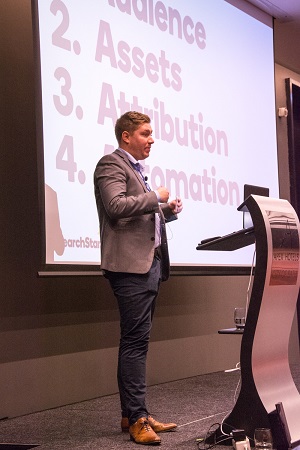
First impressions: What do your landing pages say about your business?
Ryan Webb, Conversion and Analytics Director, SearchStar
Read Ryan's presentation here...
Do first impressions matter? Yes, of course they do. With just 5-8 seconds to capture a user’s attention on a website, that impression needs to be made quickly, too. Ryan equated this to (whisper it) real world impressions that you might make on meeting a new business contact.
Be on time: website speed is crucial. Be yourself: present a clear brand identity. Be honest: be transparent and open about what you offer. Be polite: don’t make users work/think. Be positive: don’t be afraid to highlight your achievements and accolades. Do small talk: pay attention to fine detail online. Smile: Introduce some fun where possible. A landing page that does all these things should make a great first impression, regardless of the stage of customer journey.
But what about the future? How will new developments affect how we can make a good first impression? Ryan counselled for a balanced approach to GDPR considerations, and introduced the opportunity presented by Accelerated Mobile Pages (AMPs). Better audience segmentation will allow for more tailored landing pages, while tools such as Google Optimise and Data Studio will ensure that what you think is a good impression is genuine.
